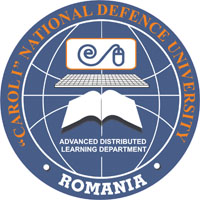DIGITAL MEDIA TECHNOLOGIES AND THE PERSPECTIVES OF VIRTUAL EDUCATION - OPINIONS OF STUDENTS AND PROFESSORS AT THE DEPARTMENT OF MEDIA STUDIES, FACULTY
DIGITAL MEDIA TECHNOLOGIES AND THE PERSPECTIVES OF VIRTUAL EDUCATION - OPINIONS OF STUDENTS AND PROFESSORS AT THE DEPARTMENT OF MEDIA STUDIES, FACULTY
Author(s): Dejan PralicaSubject(s): Education
Published by: Carol I National Defence University Publishing House
Keywords: virtual education; digital technologies; students; education
Summary/Abstract: According to 2014 official records, 3.4 million people in Serbia use the Internet, which is about 500.000 people more than in 2013. All students (100%) use the Internet and computers, but only few institutions of higher education have distance learning programs. The information system of Serbia development strategy to 2020 and The education development strategy to 2020 generally support the use of new information and communications technologies in education and, in accordance with them, the project Digital media technologies and the social and educational changes, supported by the Serbian Ministry of Education, is realized. As a part of this project, a research has been done at the Department of Media Studies, Faculty of Philosophy in Novi Sad. All 15 teachers and 272 students (undergraduate and Master-level) at the Department were the subjects in this research. The aim of this paper is to show if the teachers and students of journalism are interested in using new technologies in the educational process. The research showed that almost equal percentage of teachers (40%) and students (38%) "would like to" take part in virtual education, without being physically present in the classroom. While all teachers (100%) think that communication with students by e-mail is equal to faceto-face communication, 57% of all students said that they usually communicate with their teachers by emails. About 42% of all students do not use the services of "digital library" at the Faculty, although all technical conditions are fulfilled. The paper will also show the examples and the possibilities for virtual education, that is, the system of distance learning, for selected courses at undergraduate and Masterlevel studies of journalism and communicology. Young generation of digital natives literally holds the entire cyber universe in their hands.
Journal: Conference proceedings of »eLearning and Software for Education« (eLSE)
- Issue Year: 11/2015
- Issue No: 03
- Page Range: 137-141
- Page Count: 5

